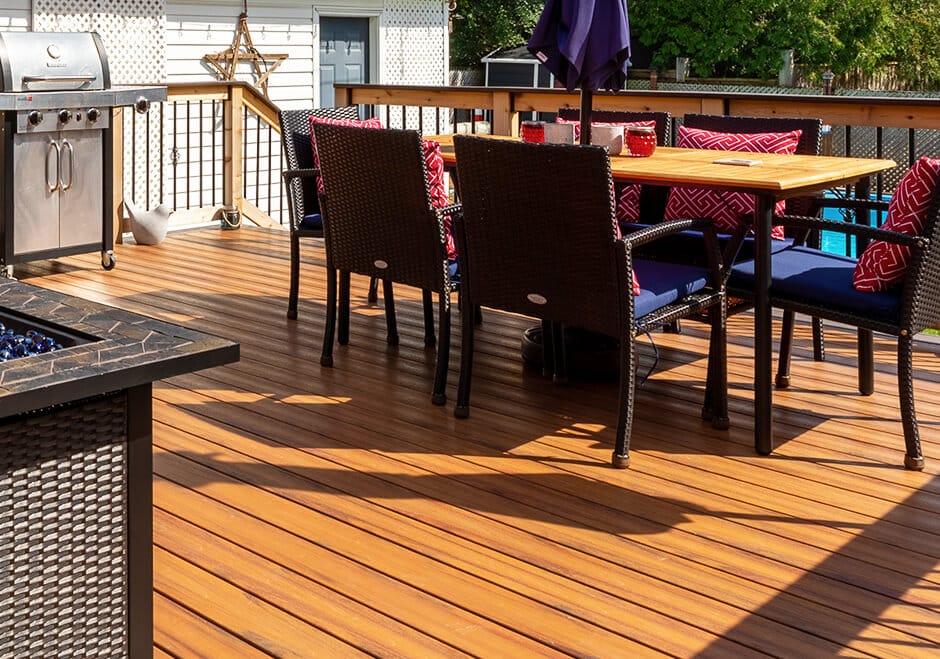
Composite vs Wood Decking
Adding a deck to your home will give you much more useable outdoor space, but it can be hard to know which deck material to use. Most homes either have a wood or composite deck for their outdoor space. Before you build, it is important to know the differences between these materials.
Deck Warranties
If you’re building a deck, you want it built right. Sometimes, however, things happen, and there could be an issue with the deck material or construction.
Typically, there is no warranty on the materials for a wood deck, but you should receive a warranty on the workmanship from your builder.
Composite decking, or any form of low-maintenance decking, comes with a manufacturer warranty. When you select your decking material, it’s important to check the details of the warranty offered by the manufacturer. If you use a deck contractor, they should be able to tell you about the warranty and whether or not they also provide a warranty on their labour. Most low maintenance decking options start with a 25-year warranty. If you experience issues with the materials, you will have to follow each individual manufacturer’s warranty claim process. If the issue is with the build of the deck, the repairs would be done under your contractor’s workmanship warranty, if you have one.
Deck Longevity
When it comes to decks, people generally desire a deck that will last them for many years of enjoyment in the spring, summer, and fall months.
Wood decks can last for quite a while if they are properly maintained, given that they are well cared for and have been well maintained. Composite/low-maintenance decking, however, will last much longer and will maintain its original look much better than wood. Composite decking materials generally stay looking great for many years to come with very little maintenance involved. They are built to withstand all kinds of weather – even the harsh Canadian winters.
Colour Variations
Composite decking comes in almost any colour you could want. You can choose from one that looks like a natural wood finish or one that is a specific colour to match your home’s exterior.
Wood, unfortunately, does not have as many options. When it comes to building decks, the wood choice is usually pressure treated or cedar and for an increased cost, a hardwood. Most builder grade decks are built with pressure treated wood as it’s the most cost-effective option.
Deck Maintenance
With a wood deck, you will need to power wash it and potentially stain or paint it every year or so, depending on the weather where you live and the deck’s exposure to sun and moisture.
Composite decking requires very little maintenance to keep it looking great year after year.
Cost
The cost of a composite deck will likely be more at the outset than wood, although wood has recently experienced some unprecedented cost increases.
A wood deck requires a regular financial investment in stain and possibly replacing some of the deck boards, along with the time required for staining and repairs. Composite decking will generally not require any costly or time-consuming maintenance.
Environmental Impact
While wood is a natural product, the chemicals used to pressure treat the wood to withstand the elements can be harmful to the environment.
While some composite decking products are not recyclable, it is arguably the most eco-friendly option on the market today due to its longevity and that it doesn’t require any sealant or stains (which often contain hazardous or toxic substances).
After weighing all the differences between composite and wood decking, you may still have some questions. Feel free to contact us anytime and check out our gallery, which has many examples of wood decking and composite decking.




